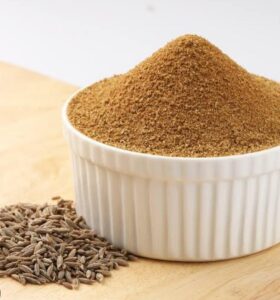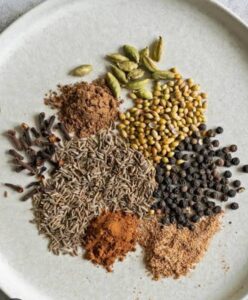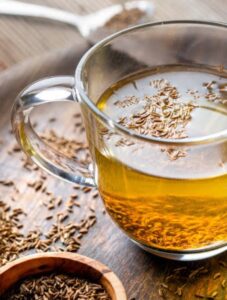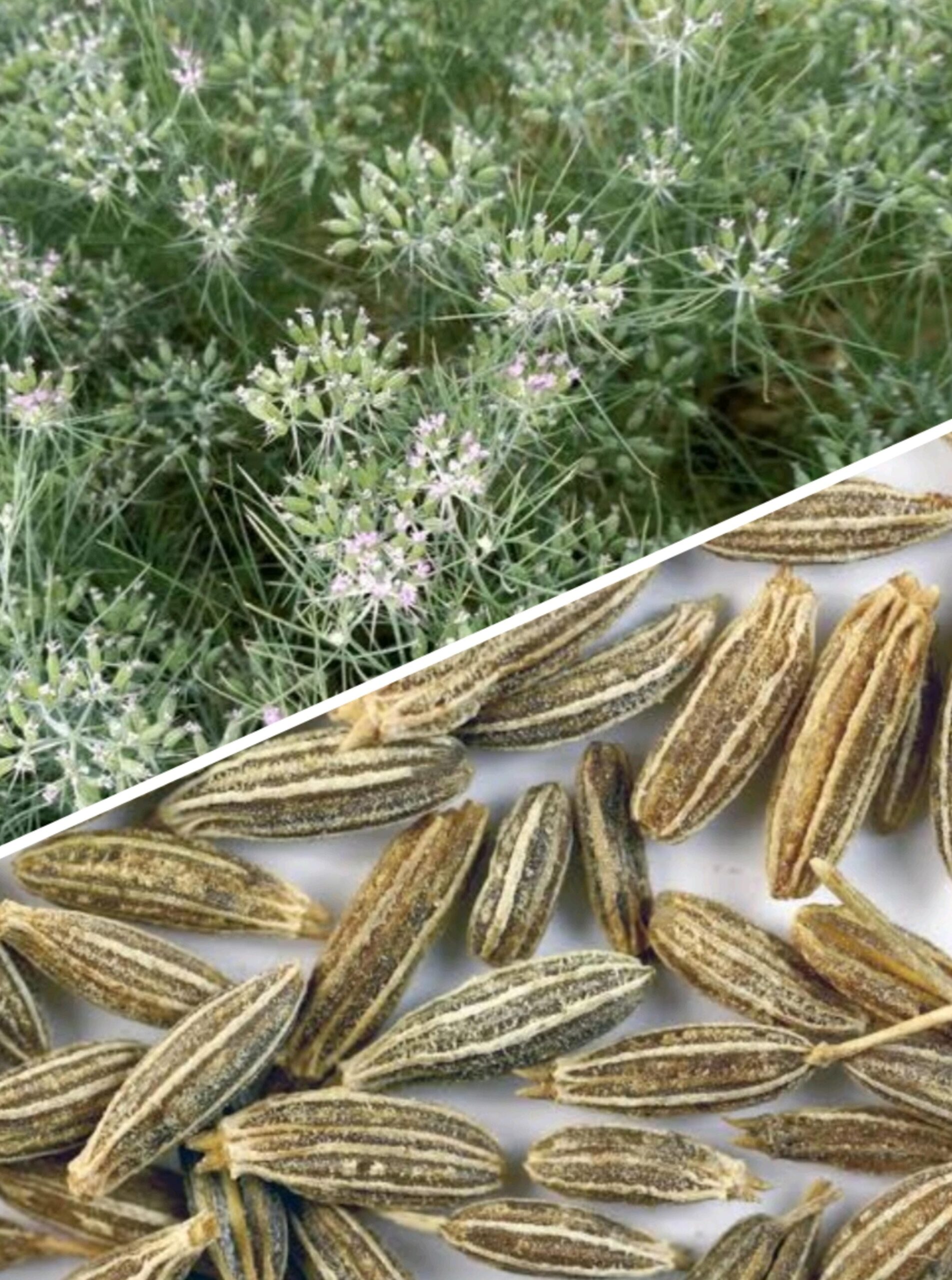Cumin Seeds: 5 Ultimate Health Benefits
Introduction
Cumin seeds (Cuminum cyminum), a spice commonly found in the kitchens of South Asia, the Middle East, and Latin America, may appear innocuous, but their historical, nutritional, and biochemical value is anything but ordinary. Cumin seeds, a member of the Apiaceae family that includes parsley, coriander, and fennel, are not only used in global cuisines but also in traditional and modern medicine. This blog delves into the extraordinary science of cumin, from its chemical composition to its health benefits and environmental significance, with a focus on its expanding importance in modern food science and human wellness.
Botanical Profile and Growth Conditions
Cumin is an annual herbaceous plant that thrives in arid areas. It thrives in loamy, well-drained soils with lots of sunlight. The plant grows to be around 12 to 20 inches (30 to 50 cm) tall, with slender stems and thin, feathery leaves. Its blooms are tiny, white or pink, and arranged in umbrella-shaped clusters typical of the Apiaceae family. The fruits, also known as “seeds,” are actually schizocarps that separate into two mericarps, each containing one seed.
Cumin, which is native to the eastern Mediterranean and South Asia, has adapted to semiarid environments because it is drought-resistant. It is grown extensively in Pakistan, Iran, Syria, Turkey, Egypt, and, increasingly, in North Africa and Latin America.
Cumin Seeds: More Than Just a Spice
Cumin’s rich flavor and scent are derived from a complex combination of phytochemicals, particularly volatile oils. Cuminaldehyde is the most prominent, giving cumin its warm, earthy aroma and slightly bitter undertone. Other noteworthy compounds are:
γ-terpinene
p-cymene
β-pinene
Limonene
α- and β-thujenes
These chemicals in cumin seeds have antioxidant, antibacterial, and anti-inflammatory effects. Cumin also contains non-volatile bioactive elements such as flavonoids, terpenes, phenolic acids, and tannins, which help to enhance its therapeutic qualities.
Its nutritional makeup per 100 grams contains approximately:
17.8g protein

22.3g fat (mainly unsaturated)
44.2g carbohydrates
11g dietary fiber
66mg iron (an exceptionally high content)
431mg calcium
1788mg potassium
Cumin’s nutritional richness makes it a highly useful element in both traditional and modern recipes.
Traditional and Modern Medicine
Cumin seeds have long been venerated in the Ayurvedic, Traditional Chinese Medicine, and Unani healing traditions. It has been used to treat digestive problems, respiratory issues, and skin diseases.
Cumin is now being investigated in therapeutic settings for its function in:
1. Digestion and Gut Health
Cumin seeds boost digestive enzyme activity, specifically amylase, lipase, and protease, which break down carbohydrates, lipids, and proteins, respectively. It promotes bile synthesis in the liver, which aids in fat metabolism. Furthermore, its carminative properties aid in reducing bloating and gas by relaxing gastrointestinal muscles and emptying extra air.

2. Antioxidant Potential
Antioxidants help to reduce oxidative stress, which is a major contributor to aging and many chronic diseases. Cumin seeds include polyphenols and flavonoids like apigenin and luteolin, which help to neutralize free radicals. Cumin extract has been shown in studies to greatly increase levels of superoxide dismutase (SOD) and catalase, which are important antioxidant enzymes in human physiology.
3. Blood Sugar Regulation
Cumin may aid in glycemic management in people with type 2 diabetes. Cumin seeds’ extract has been shown in studies to improve insulin sensitivity, lower glycated hemoglobin (HbA1c) levels, and lower fasting blood glucose via modifying glucose metabolism enzymes and lowering inflammation.
4. Antimicrobial and Antifungal Properties
Cuminaldehyde has significant antibacterial activity against Staphylococcus aureus, Escherichia coli, and Salmonella spp. These qualities are being investigated for natural food preservation. Furthermore, cumin oil has antifungal action against Candida albicans and Aspergillus flavus, indicating promise for topical formulations.
5. Anti-inflammatory and Immunomodulatory Effects
Cumin suppresses the formation of COX and LOX enzymes, lowering inflammatory mediators such as prostaglandins and leukotrienes. This is particularly beneficial for treating chronic inflammatory disorders, including arthritis and asthma.
Applications in Culinary Science
Cumin’s allure in cooking stems not only from its flavor, but also from its capacity to change dishes via a process known as “tempering” or tarka. When dry cumin seeds are put into hot oil, the heat causes the release of volatile aromatic oils via a process known as thermal volatilization. This greatly improves the olfactory and gustatory characteristics of food. For visual assistance, check the cooking section on my YouTube channel, where I use this wonderful aromatic seed.
Cumin is commonly used in baking to flavor breads and pastries, particularly in North Africa and the Middle East. Ground cumin is the foundation of popular spice combinations including garam masala, baharat, adobo, and curry powders. Its combination with other spices increases the bioavailability of important minerals, most notably curcumin from turmeric.
Functional Food and Nutraceutical Innovations
Cumin seeds, like many other herbs and seeds, are increasingly being employed in health-related goods by modern food science research. Cumin extracts are being developed as:
Herbal teas promote intestinal health.
Dietary substances that promote metabolic health.
Fermented dairy products enhanced with plant-based antioxidants.
Snack and protein powders for micronutrient supplementation.
Nanoemulsions and liposomal delivery are two encapsulation technologies that improve the bioavailability of cumin’s active components, including cuminaldehyde and flavonoids. This makes cumin-based formulations more effective at delivering health advantages in lower doses.
Agricultural and Environmental Research
Cumin farming has ecological benefits because of its low water requirements and ability to grow in saline soils. It is a climate-resilient crop that is appropriate for areas experiencing increased drought and heat stress.
Researchers are looking into allelopathy in cumin, which is the production of biochemicals that restrict weed development. Cumin has been shown in preliminary studies to naturally limit the germination of invasive species, making it valuable in sustainable agriculture.
Furthermore, cumin flowers promote pollinator biodiversity by attracting bees and other helpful insects, increasing the yield of nearby crops.
Cumin Seeds in the Cosmetic and Wellness Industry
Essential oil made up of cumin seeds is increasingly used in cosmetic products. Cumin oil is rich in antioxidants and antibacterial compounds, and it is utilized in:
Creams that fight acne.
Scalp and hair care serums.
Aromatherapy Blends for Relaxation.
Natural deodorants with antibacterial characteristics.
Its warm, spicy aroma is commonly used in perfumes and soaps, where it is combined with woody, citrus, and resinous notes to produce exotic scent profiles.
Scientific Studies and Clinical Trials

Recent human research has highlighted the various impacts of cumin. For example, a 2014 clinical experiment published in the journal Complementary Therapies in Clinical Practice found that cumin supplementation significantly lowered weight, BMI, and waist circumference in overweight women.
Another double-blind placebo-controlled study published in Phytotherapy Research discovered that both black cumin (Nigella sativa) and regular cumin (Cuminum cyminum) could enhance lipid profiles and reduce systemic inflammation in metabolic syndrome patients.
In vitro studies have demonstrated cumin seeds’ ability to cause apoptosis (programmed cell death) in cancer cells, particularly colon and breast cancer lines. While these findings are encouraging, large-scale clinical trials are needed to definitively demonstrate cumin’s chemopreventive effect.
Cultural and Historical Significance
Cumin’s historical roots run deep. Its preservation characteristics made it useful in mummification ceremonies among the ancient Egyptians. Cumin was used as a digestive aid by Roman troops during wars, and in medieval Europe, it represented fidelity and protection, and it was frequently tucked into bridal gowns or given as a love token.
Cumin seeds are cited in prophetic medicine (Tibb al-Nabawi) as an ingredient in black seed combinations for healing. In South Asian households, a glass of cumin water (cumin-infused water) is a daily health practice passed down through generations.
Conclusion
Cumin’s use as a spice is just the tip of the iceberg. Cumin, with its diverse biochemical profile, nutritional richness, therapeutic qualities, and environmental benefits, sits at the crossroads of gastronomic joy and scientific amazement. Emerging research is revealing its potential for preventing and controlling chronic diseases, boosting gut health, and improving sustainable agriculture.
Cumin’s use in diets, natural cures, and functional foods is likely to grow as science advances. When you put cumin into a sizzling pan, you’re not only adding flavor; you’re also participating in a time-honored ritual backed by modern research.
Happy Gardening!!







